Spotted Lanternfly
Description
The spotted lanternfly is a distinct and colourful planthopper native to China.1 Spotted lanternflies feed on “phloem”, a sugary tissue that plants and trees need to transport nutrients for growth. Spotted lanternflies are adaptable to a wide range of host plants, including apple, grape, black walnut, butternut, maple, willow, oriental bittersweet, sawtooth oak, chinaberry, hops, and their favourite host, the tree of heaven.2,3
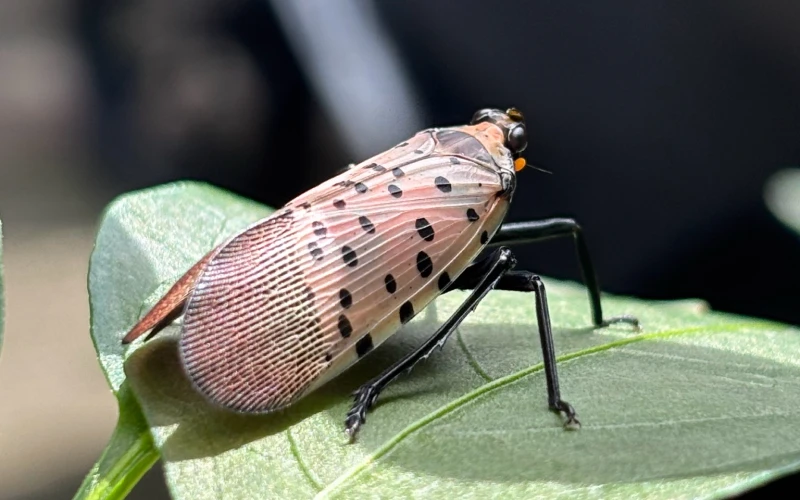
© CatPotato via iNaturalist.org, used under CC BY NC
Introduction and Spread
Spotted lanternfly were likely introduced to North America via egg masses laid on stone imports from Asia.2 The first North American detection was in Pennsylvania, USA, in 2014.4
Spotted lanternflies can naturally spread short distances by flight. They can also disperse longer distances by being accidentally transported by humans. Human-aided movement can occur with any life stage of spotted lanternfly but is particularly likely for egg masses .2 This is because egg masses are difficult to spot and can be deposited on a range of substrates including stone, wood, live plants, and inorganic materials like plastic and rubber.
Potential industrial vectors (i.e., means of movement) for spotted lanternflies include shipping pallets, containers, cargo, trains, commercial trucks, and imports of stone and wood.
Potential domestic vectors for spotted lanternflies include firewood, vehicles (cars, trailers, ATVs), hiking or outdoor gear, and pets.5
Distribution
Since introduction to Pennsylvania in 2014, spotted lanternflies have spread to many other eastern states in the USA.6They have not yet been detected in Canada, however dead spotted lanternfly have been found on commercial trucks coming from the States. There is continued risk of their introduction to Canada from either the United States or Asia.
Impacts
Feeding spotted lanternflies create weeping wounds on trees and can cause dieback or death of host plants.4,5
Spotted lanternflies threaten grape, fruit tree, and forest industries.1 They may also threaten industries for maple syrup and Christmas trees .2,7Potential impacts include reduced growth, lower yields, and poorer quality of fruit .4,5 Spotted lanternfly are of particular concern to Ontario’s wine and grape industry, which generates billions of dollars every year.
In Pennsylvania, spotted lanternflies have inflicted millions of dollars of damage on the agriculture and forestry industries, and it is estimated that they could cost the economy as much as $324 million per year if they are not contained.2
Their sugary excrement (“honeydew”) accumulates below host trees. Honeydew develops black mold that reduces photosynthesis and growth of understory plants and attracts wasps and bees.1,4,5
Spotted lanternfly damage will exacerbate impacts of other ecosystem stressors like climate change and land use change. 4
Life Cycle
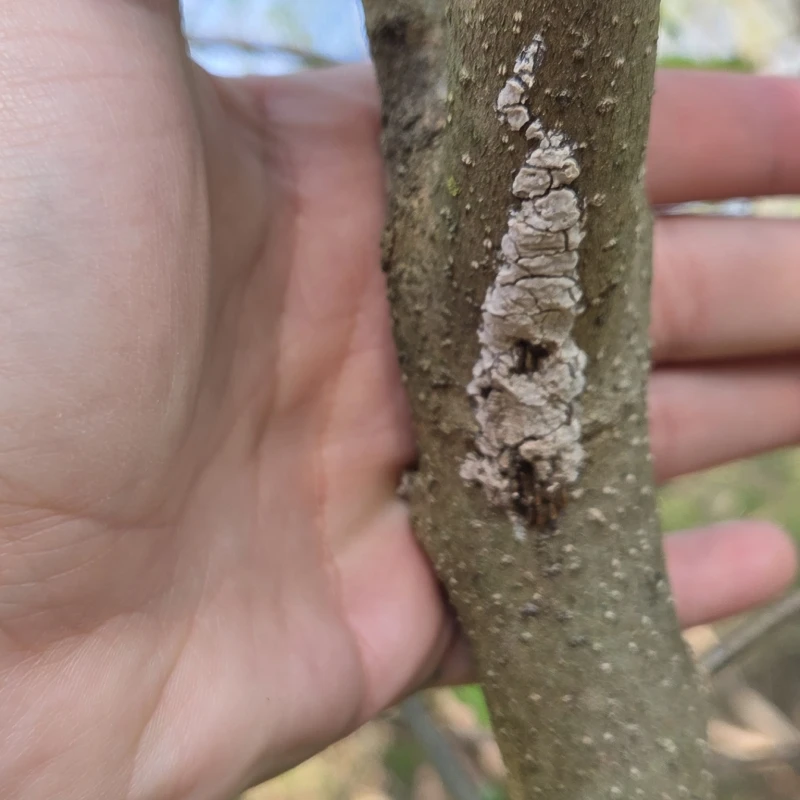
Fall/Winter
Egg masses are 2.5cm long and covered in grey waxy coating.

Winter/Early Spring
Older egg masses lose their coating, revealing brown eggs.
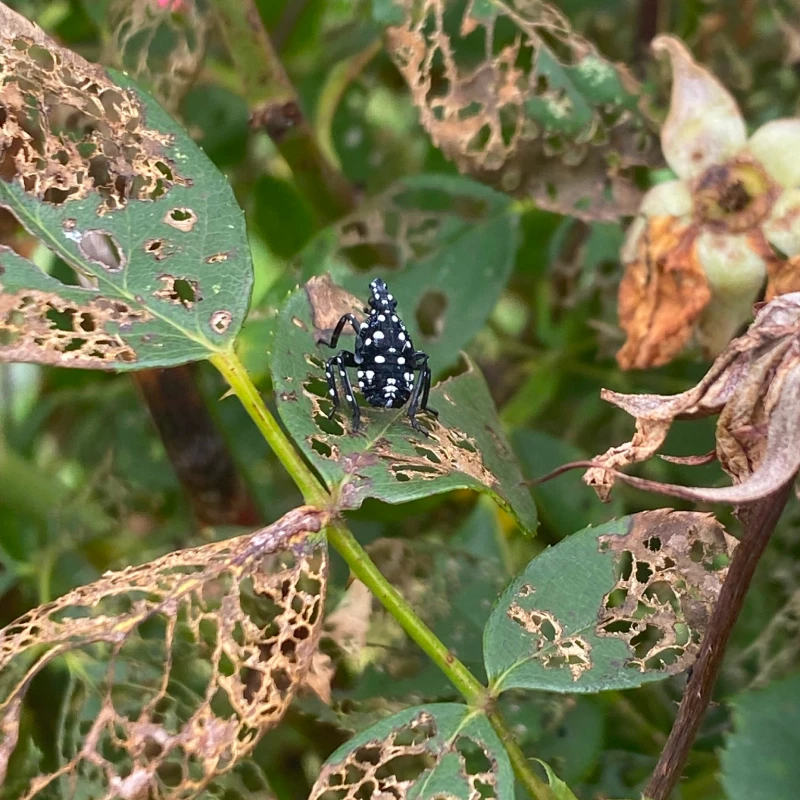
Spring/Summer
At first, nymphs are black with white spots and 0.6 cm long.
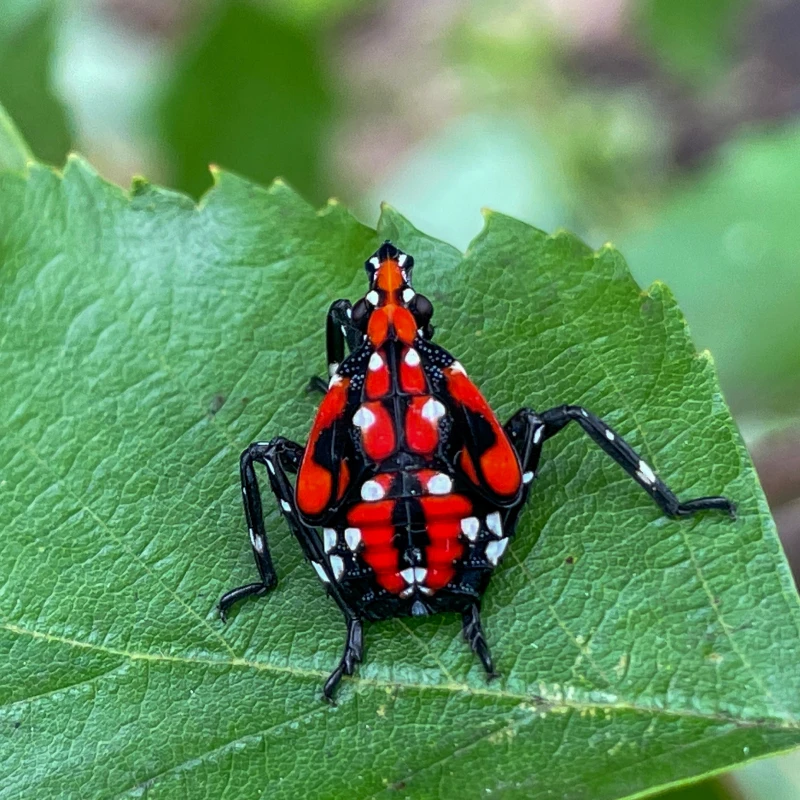
Early Summer
Nymphs become more reddish as they mature, but they retain white spots. They can grow up to 1.25 cm long.
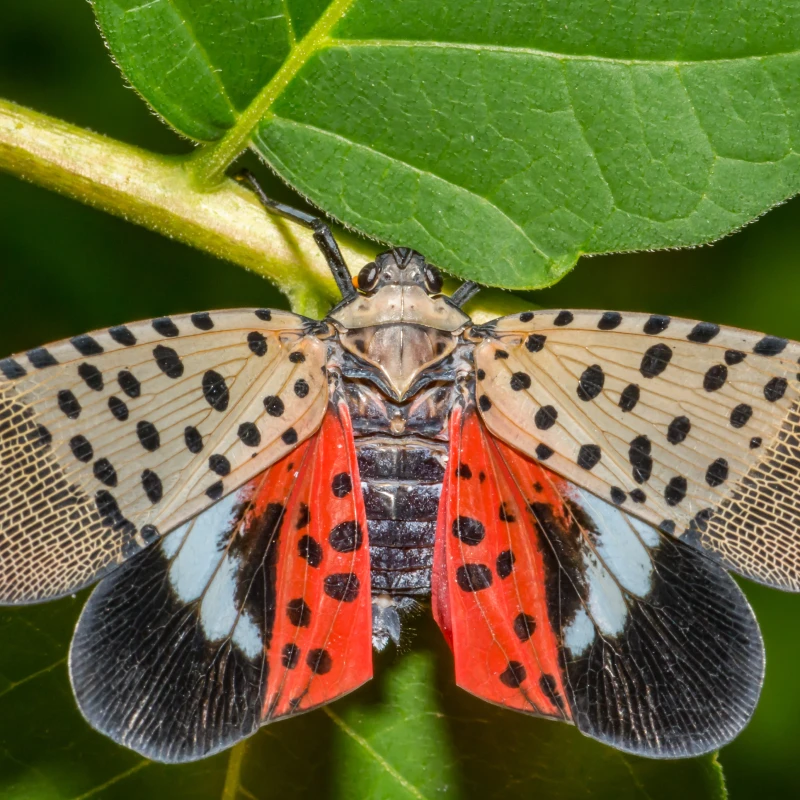
Late Summer
Adults are up to 2.5 cm long. Their front wings are light brown or grey and their rear wings are red. Both sets of wings have black spots near the front.
Spread and Control
Everyone can help prevent introduction of spotted lanternflies to Canada by doing the following:

Play Clean Go
Check before you go
Check your vehicle, outdoor items, and gear when travelling, especially from the United States. Spotted lanternflies are found in agricultural, residential, industrial, and forested areas, so it’s important to inspect and clean ALL your outdoor items.
Check your outdoor items and gear
It’s important to inspect and clean ALL your outdoor items and recreational gear, including grills, lawn furniture, yard games, tents, hiking boots and backpacks. Inspect your vehicles, trailers or ATVs for all life stages of spotted lanternfly, paying particular attention to the underside and wheels. Use water or compressed air to remove plants, insects or mud from your tires or fenders ((egg masses can look like mud splatters!).
Check your outdoor items and gear
It’s important to inspect and clean ALL your outdoor items and recreational gear, including grills, lawn furniture, yard games, tents, hiking boots and backpacks. Inspect your vehicles, trailers or ATVs for all life stages of spotted lanternfly, paying particular attention to the underside and wheels. Use water or compressed air to remove plants, insects or mud from your tires or fenders ((egg masses can look like mud splatters!).
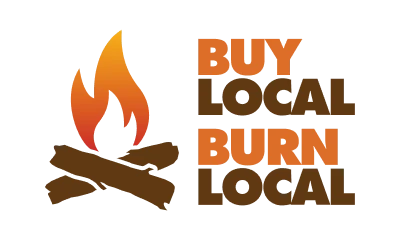
Buy Local Burn Local
Spotted lanternflies feed and lay eggs on many tree species. Buy firewood close to where you will burn it, so you avoid transporting unwanted hitchhikers. Leave unused firewood on site.
Destroy it!
Scrape off and destroy egg masses by crushing them in rubbing alcohol, hand sanitizer, or soapy water. Destroy nymphs and adults by crushing them. Keep any samples in a sealable container to provide to the Canadian Food Inspection Agency (CFIA) for confirmation.
Observe and Report
Visit inspection.canada.ca/pests to find out how to report your sighting to your local CFIA office. Visit reportcanadainvasives.ca to learn how to report invasive species sightings in your province/territory or use a reporting app.
If a spotted lanternfly invasion occurs, other management actions include insecticide application, trunk traps, removal of preferred host trees, and use of detection dogs to find egg masses.1,5,8,9
Additional Resources
1. Francese, J. A., Cooperband, M. F., Murman, K. M., Cannon, S. L., Booth, E. G., Devine, S. M., & Wallace, M. S. (2020). Developing traps for the spotted lanternfly, Lycorma delicatula (Hemiptera: Fulgoridae). Environmental Entomology, 49(2), 269–276. https://doi.org/10.1093/ee/nvz166
2. Urban, J.M. 2019. Perspective: Shedding light on spotted lanternfly impacts in the USA. Management Science 76(1). https://doi.org/10.1002/ps.5619
3. Murman, K., Setliff, G. P., Pugh, C. V., Toolan, M. J., Canlas, I., Cannon, S., … Cooperband, M. F. (2020). Distribution, survival, and development of spotted lanternfly on host plants found in North America. Environmental Entomology, 49(6), 1270–1281. https://doi.org/10.1093/ee/nvaa126
4. Barringer L. & Ciafré C.M. 2020. Worldwide feeding host plants of spotted lanternfly, with significant additions from North America. Environmental Entomology 49(5): 999-1011. https://doi.org/10.1093/ee/nvaa093
5. Cook, R. T., Ward, S. F., Liebhold, A. M., & Fei, S. (2021). Spatial dynamics of spotted lanternfly, Lycorma delicatula, invasion of the Northeastern United States. NeoBiota, 70, 23–42. https://doi.org/10.3897/neobiota.70.67950
6. Cornell CALS (College of Agriculture and Life Sciences). 2022. Introduction, native range, and current US range. Webpage available at: https://nysipm.cornell.edu/environment/invasive-species-exotic-pests/spotted-lanternfly/spotted-lanternfly-ipm/introduction-native-range-and-current-range-us/7. Harper, J.K., Stone, W., Kelsey, T.W., Kime, L.F. 2019. Potential economic impact of the spotted lanternfly on agriculture and forestry in Pennsylvania. Available at: https://www.rural.palegislature.us/publications/research-reports.cfm
8. Nixon, L. J., Leach, H., Barnes, C., Urban, J., Kirkpatrick, D. M., Ludwick, D. C., … Leskey, T. C. (2020). Development of behaviorally based monitoring and biosurveillance tools for the invasive spotted lanternfly (Hemiptera: Fulgoridae). Environmental Entomology, 49(5), 1117–1126. https://doi.org/10.1093/ee/nvaa084
9. Essler, J. L., Kane, S. A., Collins, A., Ryder, K., DeAngelo, A., Kaynaroglu, P., & Otto, C. M. (2021). Egg masses as training aids for spotted lanternfly Lycorma delicatula detection dogs. PLOS ONE, 16(5), e0250945. https://doi.org/10.1371/journal.pone.0250945